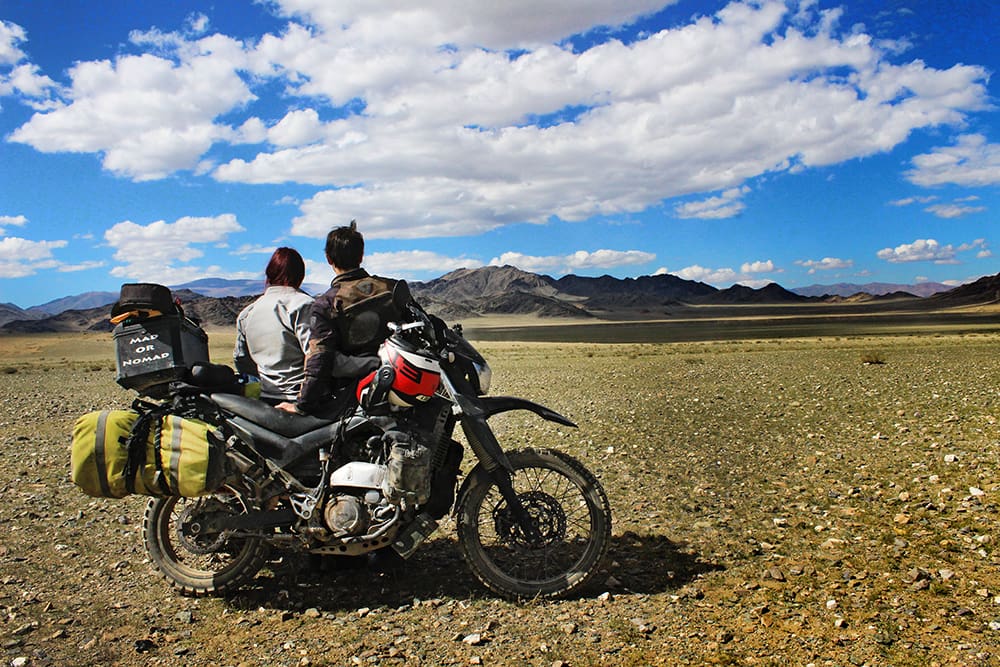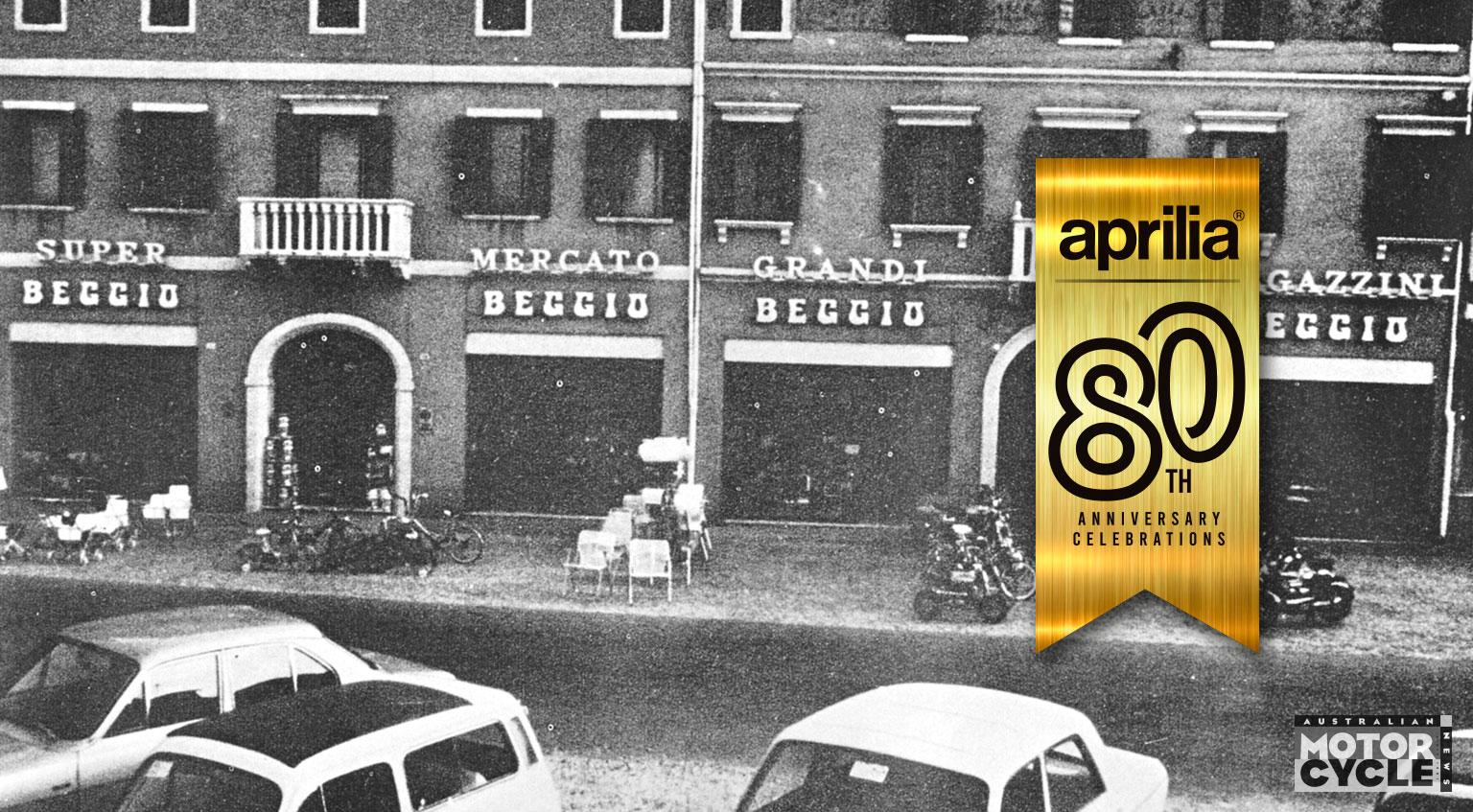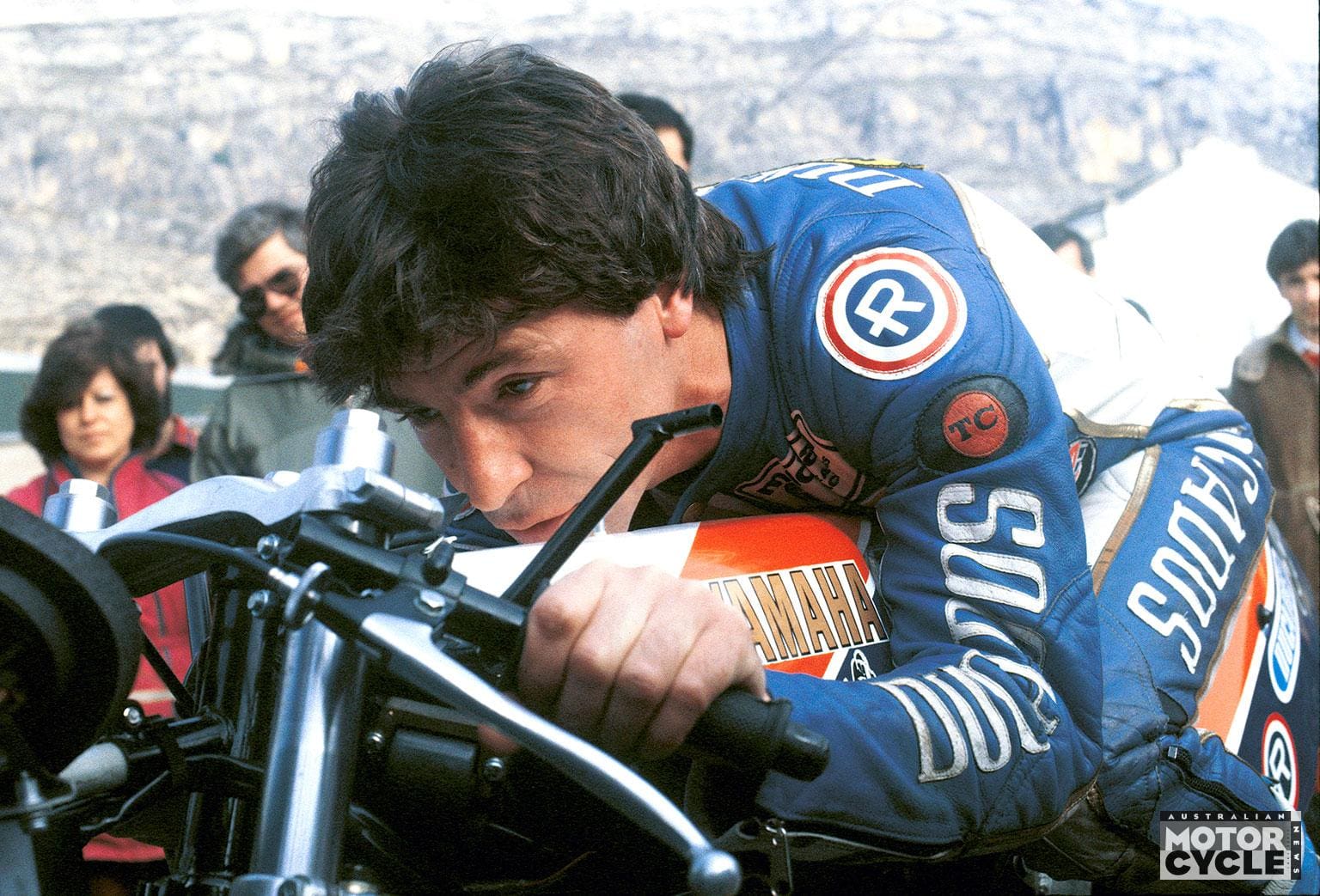A FLYING START IN EUROPE
Not wanting to die on the first day was the only thing I could think about as we chugged along a blacked-out, empty French motorway at 40km/h, in the most dangerous riding conditions we’ve ever experienced. The wind threw us from lane to lane like rag dolls. The rain was relentless, hammering into our visors and reducing visibility to an outstretched hand. When the rain rested the fog took over; a thick cold blanket that swallowed petrol stations and left us running on fumes, and finding fuel with only drops to spare.
Only as we arrived at a friend’s house in Normandy at 1am (seven hours later than the planned three-hour ride) did we discover the cause of the weather; Storm Eleanor. We’d just ridden through an onslaught of 130km/h winds and rain, severe storm warnings plastered the French internet and the entirety of the route we’d just ridden was on red alert. The ‘violent wind’ warnings peppered along the motorway signs were probably a good clue.
We should have checked the weather before leaving but it was a mad rush. Our bags were quickly strapped into an embarrassing leaning tower. The excessive weight took me by surprise as I nearly dropped the bike. My stomach churned at the realisation of the new load. But with awkward smiles we set off – setting fire to our camping bag on the way to the Channel Tunnel crossing.
The next few days were no better. Eleanor realised we were making a run for it and made us pay by nearly smashing us into a bridge barrier. We rode at what felt like a 45-degree angle, sweating as I wrestled with the handlebars, trying to hold everything upright as the tyres sloshed and slipped beneath us.
We couldn’t outrun Eleanor, who tormented us all the way to Germany, leaving us physically exhausted and soaking wet. Alissa’s boots filled with water and so did all our bags. Nothing was dry, not even our laptop. By the time we arrived in Nuremberg we were so cold, numb and wet that our hosts had to help us undress.
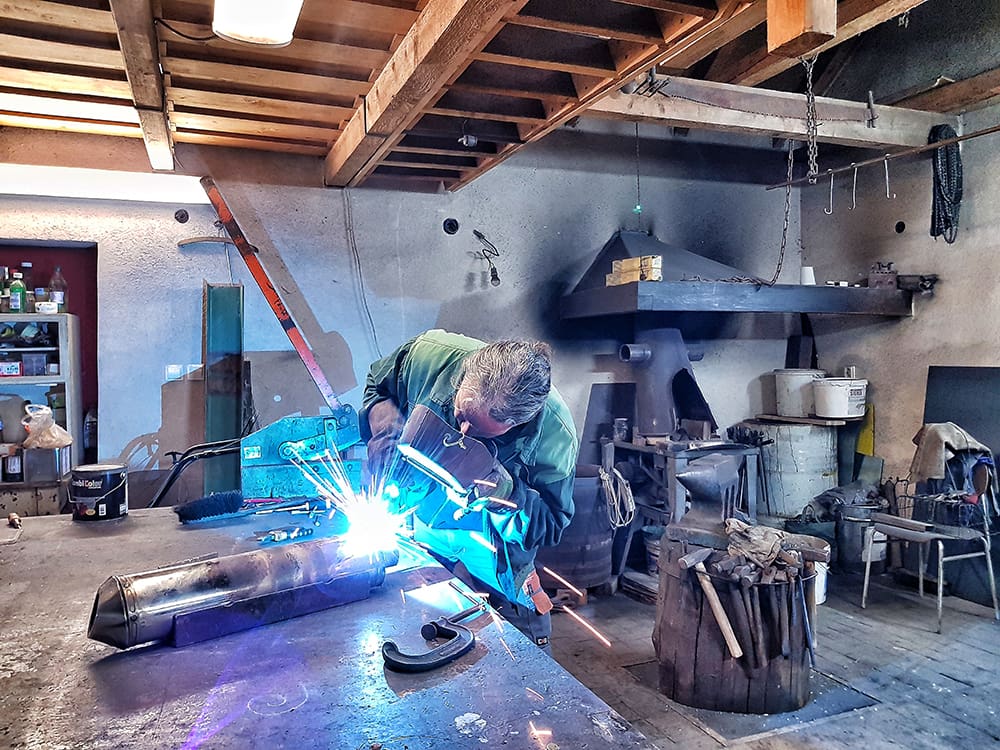
Only as we left Vienna did the weather change. The sun shone through a pale blue sky and we thought, for a brief moment, that things were going to get better – until we ran out of petrol on the motorway thanks to a faulty fuel gauge. I hitched a lift with a Hungarian lorry driver named John, as Alissa guarded the bike on an Austrian hard shoulder.
We only had 300km to cover before reaching our friend’s house in Slovakia. We pleaded with the XT to last. But the battery died and the exhaust snapped off. We jump-started the bike, bodgied-up the exhaust and made the decision to carry on, much to the dismay of the XT, which screamed in agony as it limped the last 200 kays.
As we arrived at our friend’s front door, the XT shat itself, spluttered out a bunch of error codes, coughed its final breath and died. We pushed it the last 10 metres into his garden and left it sitting there, shaking from the ordeal. Only in the morning did we notice a trail of hydraulic fluid leaking from the remote preload adjuster. The chain had sliced the cable, the rear shock had to
be removed and parts ordered from the UK.
Three years passed by in Slovakia – or was it three weeks? Either way, it was a long time. As the days rolled on, fluffy white snow replaced the fog. With each passing hour the white stuff deepened and the temperature plummeted to -15ºC.
Through Europe we were wet, tired and cold. We had massively overpacked, our bike threw a tantrum and refused to budge, riddled with error codes, a broken exhaust, rear end in pieces, and there was a sea of snow ahead of us for a month.
And it was only day seven. But it’s going to get better. It has to… right?

SAND AND SUSPENSION IN CENTRAL ASIA
Things did get better. The exhaust only broke twice more through Turkey and the Caucasus. We were out of the storm, no longer permanently wet and we finally felt a tingle of warmth stroking the backs of our necks. But it wasn’t enough – we longed for the heat of Central Asia.
As we crashed our way through the arid, desolate desert of northern Uzbekistan, dehydrated, sweltering and deliriously sick from the sun, we regretted it. Stinging sweat trickled into my eyes, blurring the huge holes in the middle of the road. The front wheel smashed into pothole after pothole, the bike yelping and crunching for days on end. Overloaded with an extra 30 litres of fuel in plastic water bottles (because there were no petrol stations for hundreds of kays) the bike and its springs took a bloody beating.
And it didn’t stop there. Tajikistan’s rough Pamir mountains took their toll on the XT, too. So, when we entered Afghanistan, we stripped off most of our kit, dumped it in a Tajik motel, crossed the border and went in light to give the bike a rest. But the deeper we rode into Afghanistan’s legendary Wakhan Corridor, the more the tracks disintegrated, leaving sharp rocks and giant boulders to smash against the already broken bash plate.
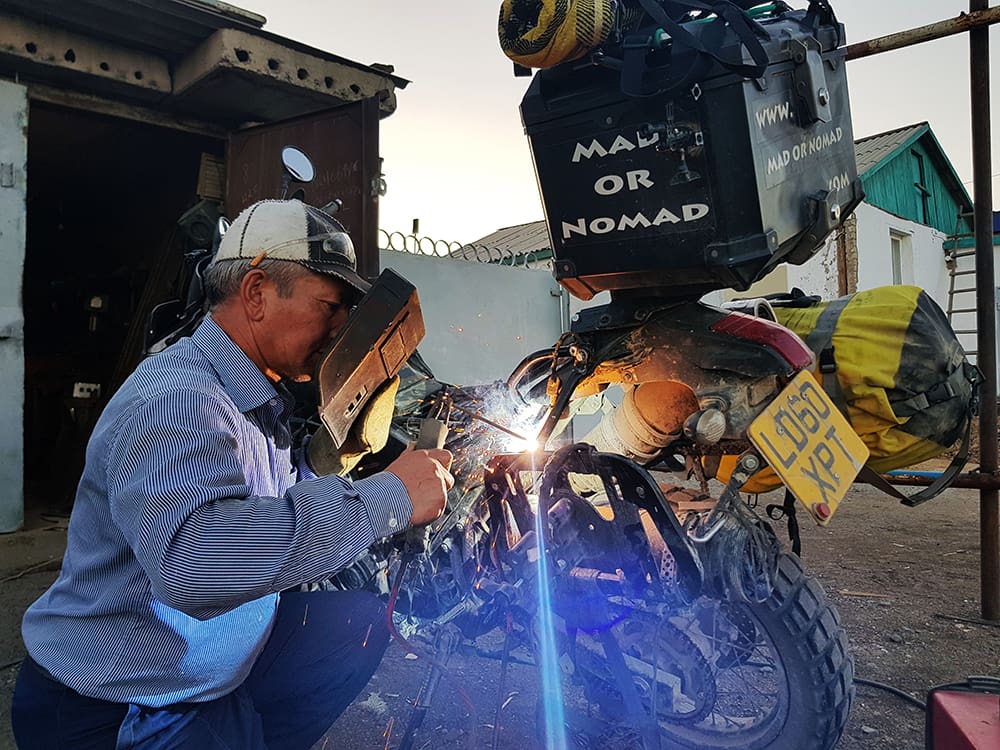
By the time we crossed back into Tajikistan we were missing a few spokes and had a slow puncture. A few hundred kilometres later and the rear shock gave up, leaked all of its fluid and had more bounce than a really bouncy ball – causing the subframe to snap and the frame to crack. With no rear suspension we were left with no choice but to ride 560km off-road, through blinding sandstorms and thick mud over No-Man’s Land to the next country of Kyrgyzstan, and the closest garage. Two weeks of waiting for parts and a lot of welding later and we were back on the road to Mongolia’s capital, Ulaanbaatar.
We only got stuck a few times in deep Mongolian sand, went a little mad in the sheer vastness of its rugged terrain and bodgied the exhaust back together once more. That was it. We’d made it through the hard stuff. We now only had 4000 smooth motorway kays through Russia, and we’d be on a ferry to Japan and sipping sake in no time.
Nothing else could go wrong. There was nothing else to go wrong – surely?!

THE GREAT SIBERIAN RACE
“No. No tourist visa for Russia for you, only transit visa,” said the consul at the Russian embassy in Ulaanbaatar, Mongolia. “You have eight days to cross Siberia to Vladivostok, on ninth day you must be at customs, on 10th day you must be on boat to Japan or heavy fine and deportation for you.”
Eight days to race 4000km across freezing Siberia with a strict visa, on a broken and overloaded motorcycle, with no time to change the worn-out tyres, to catch the ferry to Japan or risk a hefty fine? No problem! We had no choice, we’d come too far, it was either risk it to continue the trip or turn around and go home. This was the week we needed everything to go right.
It all went wrong from the first minute of day one. We slept in a motel on the Mongolia/ Russia border so we could make a good start. We woke up to a flat front tyre, a delay at the border, hours searching in vain for a new tube and seven hours behind schedule by the time we arrived at our Russian truckers’ motel, past midnight, freezing cold and soaking wet… again.
Over the next eight days we had four punctures, a ripped inner tube, destroyed tyre, snapped pannier rack, broken GPS, split exhaust, ran out of fuel twice and we nearly adopted a cat.
We raced through Siberia, riding over 12 hours a day through torrential rain and icy temperatures, hitchhiking, walking, pushing the bike and crawling to make it to Vladivostok and catch the ferry on time. We bloody made it. Just.
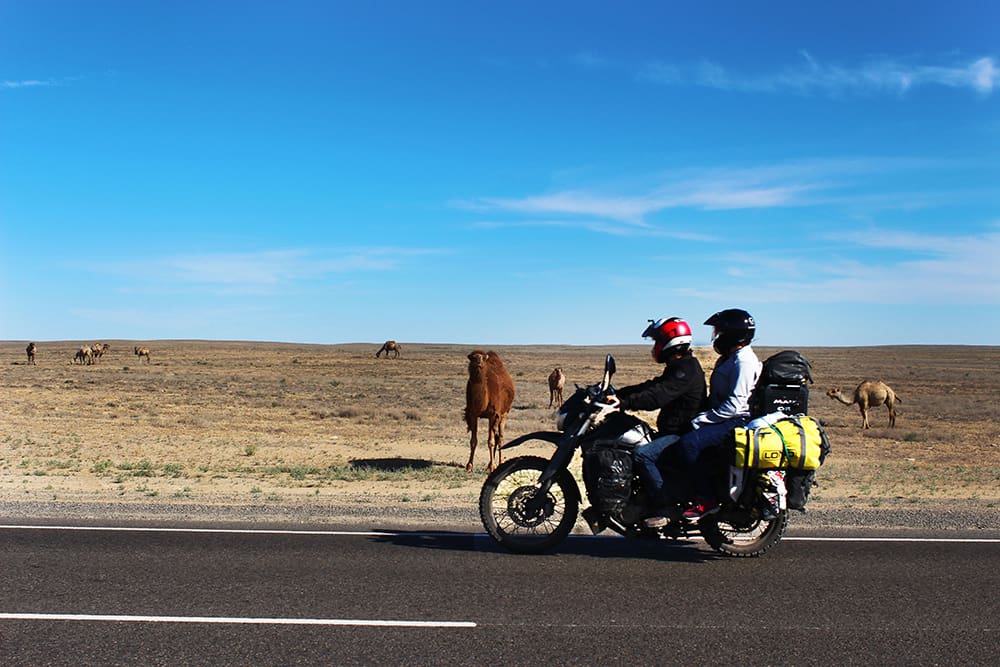
SIPPING SAKE IN JAPAN
Riding 20,000 miles from the UK to Japan was the best year of our lives so far. We made lifelong friends, learnt about ourselves, our bike and what we’re capable of. And most of that was a result of all the stuff that went wrong. Things break, plans change, the unexpected comes along and that’s what travelling is all about.
However, it could have been smoother. And flitting between freezing cold and boiling hot isn’t the best thing… and I suppose constantly fixing a motorcycle isn’t the most fun either. Now, a year later, we’ve learnt that the hard and long way (slow learners). So, avoid our mishaps and you’ll be just fine! Right, back to fixing that puncture…
Who are Andy and Alissa? Andy and Alissa left their lives behind in the UK to travel the world on their Yamaha XT660R indefinitely. You can follow their adventures at www. madornomad.com or Mad or Nomad on Facebook.

What NOT to do – Here’s how to avoid our mishaps on your trip
Set off without a dry run And I’m not talking about the weather. A fully-packed dry run is at the top of the must-do list. We didn’t make time for one and paid the price. Our bags were packed too high on the sides and one ended up on the exhaust, causing a burnt bag and a crispy tent. Our top box was also too far forwards and we had to fabricate extension plates in Slovakia to move it back. Our sidestand needed cutting down about three centimetres. A dry run would have saved us learning the hard way.
Don’t test the bike. We left two-up on a Yamaha XT660R because I already owned the bike and used it to ride from the UK to Iraq and back about eight years ago. It’s tried, tested and tough. But it wasn’t tested for a year of hardy riding with a pillion and loads of cold weather and camping gear. Make sure what you’ve got can handle what you want it to (we’ve now decided to have two bikes for the rest of the trip!).
Overpack because, ‘it might come in handy’. We realised that you can either leave things you’re unsure about at home, send them home after a week or throw them away on the road. They’re the only three options. When we left, we were adamant we needed everything we packed. After three weeks we sent home 10kg of stuff we didn’t need. Who knew they had shampoo and toothpaste in Europe?
Don’t bother testing your electric accessories. We eventually realised the source of our ailing battery was our two heated jackets on full blast, coupled with an amp-greedy GPS unit. Unfortunately for us, the heated jackets were the only things keeping us even a little bit warm. And be damned if I was going to turn that sat-nav off and risk missing that ferry to Japan!
Don’t worry about your kit. Consider the conditions you might be riding in and plan for cold and hot weather riding. Also, just because a label says ‘waterproof’ it doesn’t mean it will actually keep water at bay. Riding in -15ºC temperatures with soaking wet feet and blue toes is not fun. Ride in your kit for a few months before leaving, make sure it’s comfy and you know it works.
Forget about the weather. Even though there’s nothing you or I can do to change it, the weather can make or break a trip. Do your research before you go, consult the weather bureau and take the time to figure out when the best times are to be in certain countries and plan your trip accordingly. Mother Nature can be nasty if you don’t respect her. And make sure your gear’s up to it, too.
Cross visa bridges when you get to them. You can generally always apply for and be granted a visa while on the road. But sometimes it doesn’t work out and you’ll end up with a strict transit or having to travel an extra 1000 or so kays to up and around a country because you’ve been denied entry. Check embassy reports and what you can and can’t do in advance, and sort out what you can before you leave.
Top Tips
Prep your toolkit. Take your bike apart to a level you feel comfortable with, put it back together and only take the tools you just used on your trip. Try and condense them as much as possible first by swapping for two-in-ones and lightweight variants. There’s no point taking tools you’re not comfortable using, or tools you won’t use. For example, it’s unlikely you’ll perform an engine rebuild in the Sahara so don’t bother with tools for that.
Take spares. We’ve met travellers with panniers full of spares. That’s heavy, unnecessary and you can’t account for everything. We did end up waiting for weeks for new suspension parts but that’s just the way of it. What you should definitely take are spare tubes, and replace the spares as soon as possible if you use them while on the road. Also chuck in patches, tyre repair, seals for an oil change, maybe a spark plug and perhaps a bulb.
Bodge job fixings. We wouldn’t have made it without a ratchet strap. It’s the single most useful tool and all-round fixer. It’s acted as a tow rope, tied our pannier rack back to the bike when it snapped off and kept the top box in place until we had it rewelded. Metal epoxy, gaffer tape and cable ties are also handy.
Words Andy Davidson
Photography Alissa Potter
